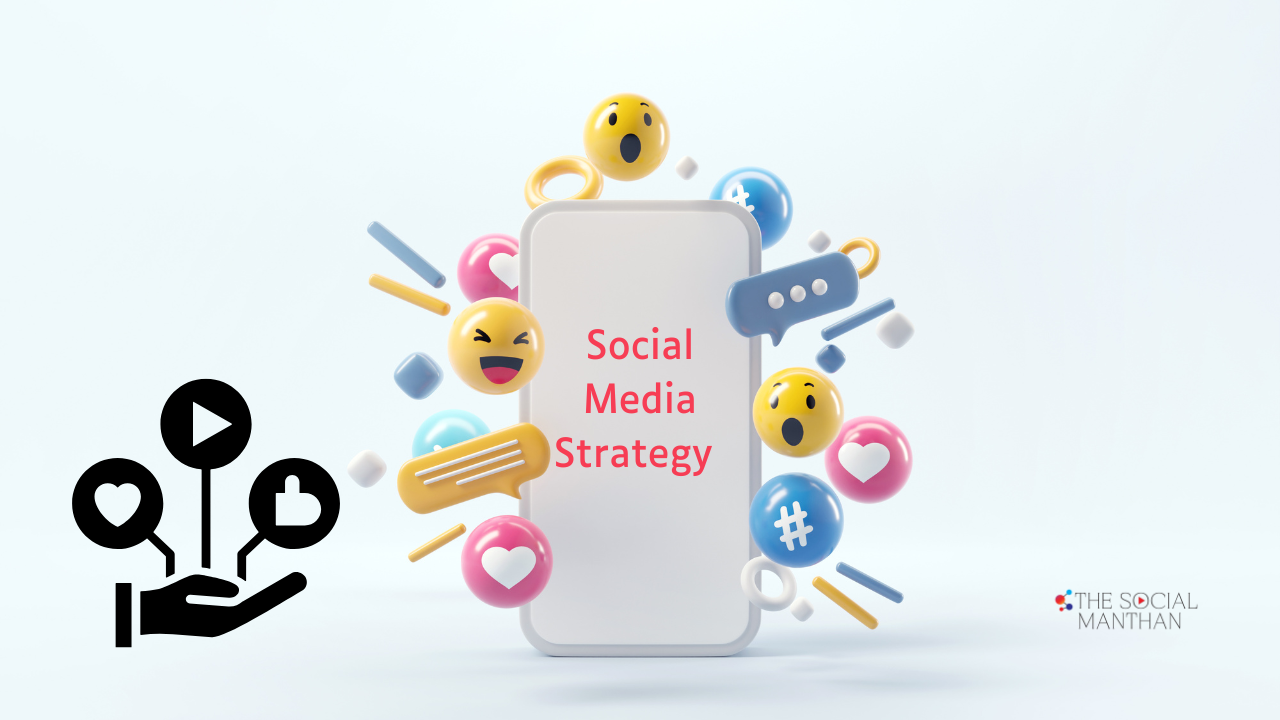Social media has evolved from a platform for casual interactions into a powerful tool for business growth. While building a large following is important, the true value of social media lies in its ability to convert those followers into paying customers. Crafting a social media strategy that drives conversions requires a thoughtful approach, combining content creation, audience engagement, and data analysis.
In this article, we’ll explore how to create a social media strategy that not only attracts followers but also turns them into loyal customers.
1. Understand Your Target Audience
The foundation of any successful social media strategy is a deep understanding of your target audience. Knowing who your followers are, what they care about, and how they behave online will help you tailor your content and engagement efforts to meet their needs and preferences.
Why It Matters:
- Relevance: Understanding your audience ensures that your content resonates with them, increasing the likelihood of engagement and conversion.
- Personalization: Tailored messaging that speaks directly to your audience’s pain points and desires can build stronger connections and trust.
- Efficient Resource Allocation: By focusing on the right audience, you can allocate your time, effort, and budget more effectively.
Action Steps:
- Create Buyer Personas: Develop detailed profiles of your ideal customers, including demographics, interests, challenges, and online behavior.
- Use Social Media Insights: Leverage analytics tools on platforms like Facebook, Instagram, and LinkedIn to gather data on your current followers and refine your personas.
- Engage with Your Audience: Regularly interact with your followers to gain insights into their preferences, questions, and concerns.
2. Set Clear Goals and KPIs
To convert followers into customers, you need to set clear, measurable goals for your social media efforts. Whether it’s increasing website traffic, generating leads, or boosting sales, having specific objectives will guide your strategy and help you measure success.
Why It Matters:
- Focus: Clear goals provide direction and focus for your social media efforts, ensuring that every post and campaign serves a purpose.
- Measurability: By setting key performance indicators (KPIs), you can track progress and adjust your strategy based on data-driven insights.
- ROI Tracking: Clear goals allow you to measure the return on investment (ROI) of your social media activities, helping you optimize your budget and resources.
Action Steps:
- Define SMART Goals: Set Specific, Measurable, Achievable, Relevant, and Time-bound goals for your social media strategy. For example, “Increase website traffic by 20% in the next three months.”
- Identify Relevant KPIs: Choose KPIs that align with your goals, such as conversion rate, click-through rate (CTR), or customer acquisition cost (CAC).
- Monitor Progress: Use social media analytics tools to track your KPIs regularly and make data-driven adjustments to your strategy as needed.
3. Create High-Quality, Engaging Content
Content is the cornerstone of your social media strategy. To convert followers into customers, you need to create content that not only captures attention but also provides value and encourages action. Your content should align with your brand’s voice and messaging while addressing your audience’s needs and pain points.
Why It Matters:
- Engagement: High-quality content encourages likes, shares, comments, and other forms of engagement, increasing your reach and visibility.
- Trust: Providing valuable, informative content helps build trust with your audience, making them more likely to consider your products or services.
- Conversion: Content that educates, inspires, or solves problems can guide followers toward making a purchase or taking another desired action.
Action Steps:
- Diversify Content Formats: Create a mix of content types, such as blog posts, videos, infographics, and user-generated content, to keep your audience engaged.
- Focus on Value: Ensure that your content provides real value to your audience, whether it’s answering their questions, offering solutions, or providing entertainment.
- Include Clear CTAs: Every piece of content should include a clear call to action (CTA) that guides followers toward the next step, such as visiting your website, signing up for a newsletter, or making a purchase.
4. Leverage Social Proof and User-Generated Content
Social proof, such as testimonials, reviews, and user-generated content (UGC), can be powerful tools for converting followers into customers. People are more likely to trust and act on recommendations from other customers than on branded messages alone.
Why It Matters:
- Trust and Credibility: Social proof builds trust by showing that others have had positive experiences with your brand.
- Increased Engagement: User-generated content often generates higher engagement rates, as it feels more authentic and relatable to your audience.
- Conversion Boost: Displaying social proof can reduce hesitation and encourage followers to take the next step, whether it’s signing up, purchasing, or sharing your content.
Action Steps:
- Encourage Reviews and Testimonials: Ask satisfied customers to leave reviews or testimonials, and share these on your social media channels.
- Feature User-Generated Content: Highlight content created by your customers, such as photos or videos of them using your products, and tag them in your posts to increase engagement.
- Showcase Case Studies: Share case studies or success stories that demonstrate the impact of your products or services on real customers.
5. Run Targeted Social Media Ads
Organic reach on social media can be limited, especially with changing algorithms. Running targeted social media ads allows you to reach a wider audience and guide potential customers through the sales funnel more effectively.
Why It Matters:
- Precise Targeting: Social media ads allow you to target specific demographics, interests, behaviors, and even custom audiences, ensuring your message reaches the right people.
- Scalability: Ads provide a scalable way to amplify your content, promotions, or product launches, driving more traffic and conversions.
- Retargeting Opportunities: Retargeting ads can re-engage users who have interacted with your brand but haven’t yet converted, helping you close the deal.
Action Steps:
- Define Your Audience: Use audience insights and your buyer personas to create highly targeted ad campaigns that resonate with your ideal customers.
- Create Compelling Ads: Design ads with eye-catching visuals, clear messaging, and strong CTAs that encourage users to take action.
- Utilize Retargeting: Set up retargeting campaigns to reach users who have visited your website, engaged with your content, or added items to their cart without completing a purchase.
6. Engage Consistently with Your Audience
Consistent engagement with your followers is key to building relationships and moving them closer to conversion. Responding to comments, messages, and mentions shows that you value your audience and are attentive to their needs.
Why It Matters:
- Relationship Building: Regular engagement helps build trust and rapport with your followers, making them more likely to become loyal customers.
- Customer Insights: Engaging with your audience provides valuable insights into their preferences, challenges, and feedback, which can inform your strategy.
- Brand Loyalty: Responding to questions, addressing concerns, and acknowledging positive feedback fosters brand loyalty and encourages repeat business.
Action Steps:
- Monitor Social Media Channels: Regularly check your social media platforms for comments, messages, and mentions, and respond promptly.
- Encourage Interaction: Ask questions, run polls, and create content that invites discussion to encourage more interaction from your followers.
- Personalize Responses: When engaging with followers, use their names and personalize your responses to make the interaction more meaningful and memorable.
7. Measure, Analyze, and Optimize
To ensure your social media strategy is converting followers into customers, it’s essential to measure your performance, analyze the results, and optimize your approach based on data.
Why It Matters:
- Continuous Improvement: Regular analysis allows you to identify what’s working and what’s not, so you can make data-driven decisions to improve your strategy.
- Goal Alignment: Tracking your KPIs ensures that your efforts are aligned with your business goals and that you’re making progress toward them.
- Adaptability: Social media trends and audience behaviors can change rapidly, and ongoing optimization helps you stay ahead of the curve.
Action Steps:
- Track Performance Metrics: Use social media analytics tools to track key metrics, such as engagement rates, conversion rates, and ROI.
- Analyze Content Performance: Identify which types of content generate the most engagement and conversions, and prioritize these in your content strategy.
- Test and Refine: Continuously test different strategies, such as new content formats, posting times, or ad creatives, and refine your approach based on the results.
Conclusion
Converting social media followers into customers requires a strategic approach that combines audience understanding, high-quality content, social proof, targeted advertising, and consistent engagement. By following these steps and continuously refining your strategy based on data and feedback, you can create a social media presence that not only attracts followers but also drives meaningful business results.
Remember, social media is a dynamic and ever-evolving landscape. Staying adaptable, creative, and customer-focused will help you build a loyal following that converts into long-term customers.





